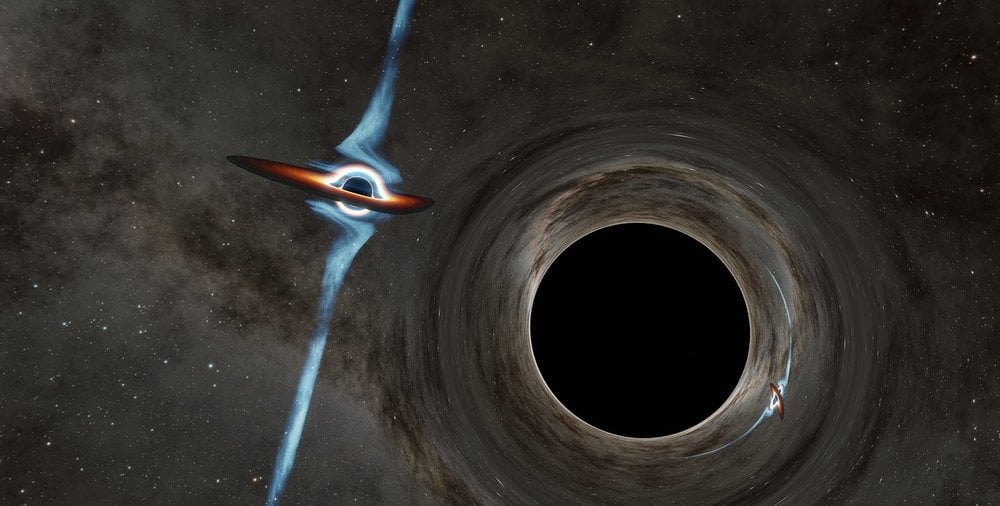A Cosmic Chirp
Many black holes are found in pairs that orbit each other like ice dancers. Eventually they collide, merge, and coalesce into one giant body. The National Science Foundation-funded LIGO (Laser Interferometer Gravitational-wave Observatory) detects ripples in space and time called gravitational waves that emanate from pairs of merging stellar-mass black holes.
When researchers translate the gravitational waves into sound waves and shift up the frequency to better suit human ears, they hear a distinct “chirp.” Compare the chirps from different black hole mergers here.
Flash in the Dark
Some scientists think that colliding black holes might also emanate flashes of light waves, but only when the black holes in question are embedded in thick disks swirling around a more massive black hole.
On May 21, 2019, LIGO and partner observatory Virgo detected gravitational waves from a pair of merging, jiggling black holes, while, around the same time, ZTF caught a flare of optical light from the same location.
The scientists speculate that the two events could be correlated and have since found other similar scenarios. They think that two smaller merging black holes are plowing through gas surrounding a much more massive one, creating the brilliant flares.
When Titans Collide

Even the supermassive black holes that lie in the hearts of galaxies can spiral around each other and merge.
In one Caltech-led study that analyzed 45 years of radio observations, astronomers found direct evidence of two supermassive black holes locked in a two-year dance at the heart of a galaxy 9 billion light-years away.

